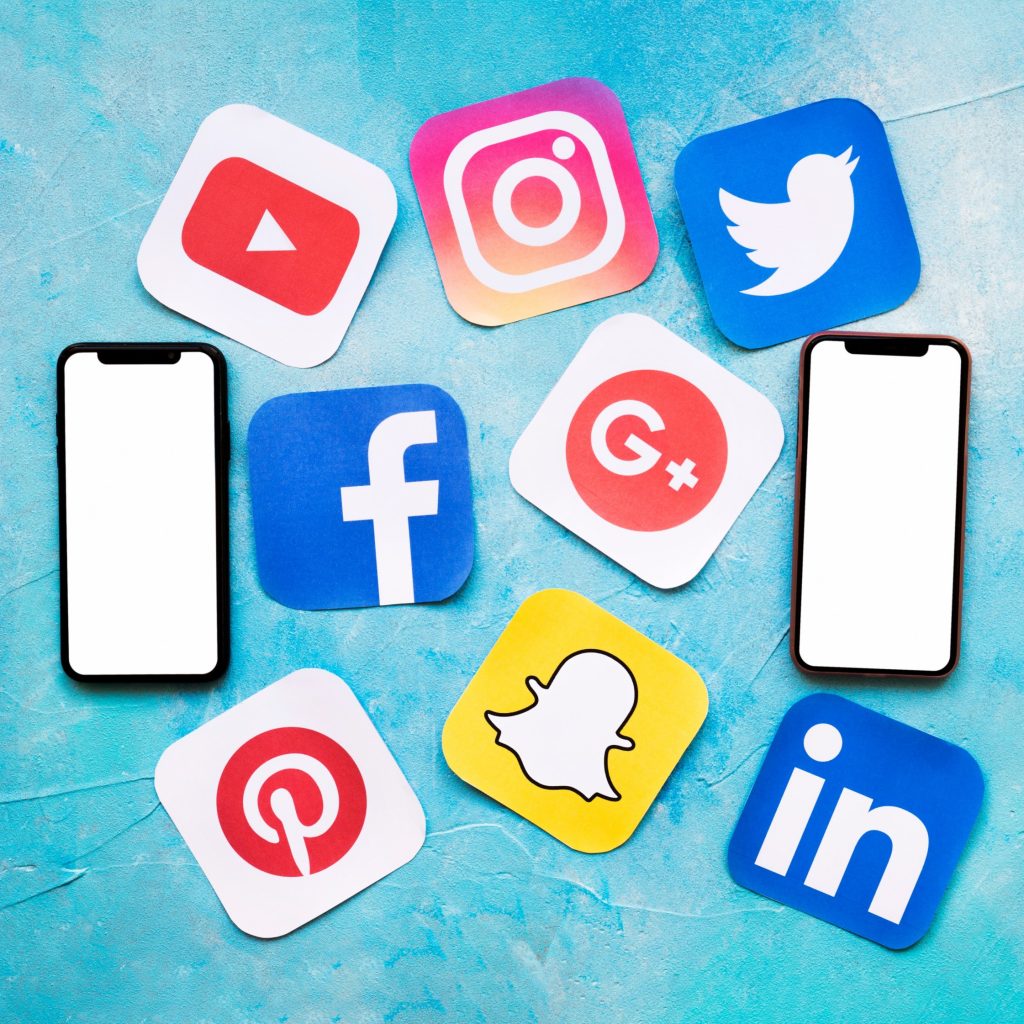The Rise Of Influencer Marketing
We grew up in times where the word influence was incomplete without the prefix bad. It’s true that at least once either you have been a bad influence or been under a bad influence, or that’s what our and our friend’s parents said. But now, it’s 2020! Actually, it’s the end of 2020. We have come a long way. And now, we don’t say the word influence without the suffix ‘er’ and it is magnificent, isn’t it?
Influencers are everywhere. They are out there, working with brands, running organizations, propagating ideologies, making businesses, and leaving us all in awe of it as we try to comprehend the rise of influencer marketing in recent years.
It’s almost 2020, and influencer marketing still remains the hot strategy in the marketing domain. But how did we reach here? While the concept of influence has been floating around since the 18th century (yes, that’s right), it gained momentum in contemporary times with the advent of social media platforms. Influential people have always existed and so have their mediums to influence people. The rise of these influencers can be traced over various periods of time.
- The Queen’s era
An anecdote from the 1800s tells us how influence made its way through the times of yore to the times of digitization. Josiah Wedgewood, an English potter, and entrepreneur was regarded, felicitated, and given business by Queen Charlotte. Wedgewood later convinces the Queen to start his business under ‘Queen’s Ware’. As soon as his business was associated with the royal family, his business boosted in no time and he started receiving orders from around the world.
This is one of the first examples of influence, given how the Queen’s status and reputation amongst the commoners was a royal endorsement for Wedgewood.

- Coca-Cola’s first attempt at influencer marketing
Coca-Cola’s attempt to use Santa Claus for its advertisement is an overused example of but it’s undeniable that it marked the beginning of another phase of influencer marketing in the 20th century. Purchasing is a habit that is driven by various factors and emotions are one of them. Coca-Cola used the jolly image of Santa Claus to endorse its product and while, the term influencer was not in use back then, it sure did the same job by creating an emotional influence of Santa Claus during the holiday seasons.
- Celebrity influencers
Celebrity influencers are considered a thing now but their inception was way before social media started. Film actors, sports players, and performers have been the favorites of brands to collaborate with. The most prominent example of celebrity endorsement still remains the Nike x Jordan collaboration. A brand deal that started back in 1984 still remains strong. Such is the impact of influencer marketing on consumers. This was not a mere sponsorship done by Michael Jordan. Instead, it was a deep collaboration that still goes on. When the partnership began, Nike was expected to make a sale of $3 million in a year. But to everyone’s surprise, they sold $126 million. Fun fact: Michael Jordan did not want to do this collaboration. He wanted to go for Adidas.

- Social media
We took a detour in the old times and now we are back to the 21 century or the age of digitization as it is popularly known. Social media is an open ground that has created a whole new career stream for influencers and a marketing stream for brands. The current stage of influencer marketing showcases influencers who are not just celebrities but experts in their own field. Influencer marketing vs celebrity endorsements is a never-ending debate but the significant difference is that the influencers are the main focus of the former marketing campaign because they are the experts in their niche. They are commoners who became famous for being influencers and not the other way, which was the case with celebrity endorsements. While both have their perks, niche social media influencers are the preferred and the most idolized today by users and brands.
When influencer marketing began, there were many prejudices and stereotypes around it that discouraged people from trying it. But some still stuck through it and overtime saw the results. It took a few years for influencer marketing to make certain necessary transitions that made people realize that it is a boon for their business.
- Small accounts and businesses have flourished
Influencer marketing was earlier only focused on famous individuals and celebrities. And generally, they would charge more than a lot of brands could afford. Hence, only the big brands got to reap the benefits. But not for long. Eventually, there was a shift and in an attempt to increase their business, small businesses approached smaller accounts to collaborate with.
Something that started as a phenomenon to make big businesses bigger has now shifted to a diverse mechanism that gives equal opportunity to all kinds of businesses to grow and flourish. Hence, eventually, influencer marketing boosted small businesses as well as small influencers. And with an influencer marketing platform like WORD Marketplace, it is easier as well as economical for small businesses to find influencers to collaborate with. This platform lets you sign up for no minimum charges and you get to handpick the influencers. Just by sharing a campaign brief on the platform, you can kickstart the search for your influencers.
- Real-time results are available
As influencer marketing grew, a lot of tools became available to track the performance of the live campaigns. Numbers and data are essential to know the success of a business. While there were already some tools available before, influencer marketing agencies and influencer marketing platforms have made it even easier.
Now, you can know the history of any influencer’s work and their performance before choosing who you want to collaborate with. A team of experts is available to update you and guide your campaigns and consult you to make necessary amendments for better results. The results are easy to track and the research process has also become effortless as well as more effective than before.
- Engagement rate is given the importance
The criteria for choosing an influencer to work with was only limited to their number of followers. Even though it is important it is not all that a brand needs to focus on. Given the number of inactive accounts available on various social media platforms, the number of followers cannot be a reliable metric to check the efficiency of an influencer.
Hence, now along with the number of followers, the engagement rate of an influencer’s page is what is considered the most to judge and select them for collaboration. The engagement rate that an influencer receives on their page gives you an idea and a scope to speculate the performance of the collaboration. If the influencer is capable of gaining a good engagement rate on their account, through their content, that your brand too can reap its benefits through the collaboration.
- Niche has become a priority
As mentioned above, the number of followers was a criterion to select influencers. The logic behind it was that the more the number of followers, the more famous the influencer is. True! But that does not make them ideal for your brand. If an influencer is famous, you have to also understand what they are famous for. The types of influencers present on social media can get as diverse as possible. Even now, there are many niches in the business and in the near future, we can expect more. This is a fact that was neglected earlier. But with many attempts and studies of marketers, the niche of the influencer is what is given more priority.
Let’s look at the rise of Instagram influencers. It began with a series of uploading pictures and being aesthetically appealing. And later on, that transitioned into influencer marketing. While these influencers were only about uploading pictures, they too evolved and picked a niche of their choice. They started maintaining a style, communication and arrived at a point where they found their niche and made content on it. This also made it easier for brands to choose influencers based on a niche similar to theirs.

- Production is easier
Influencer marketing brought a lot of changes and one of them opened a field for creative individuals. Earlier, it was only possible for brands to produce the content by arranging the necessary equipment, choosing a script, setting location, outfits, hair, and makeup. But now, influencers have a team of their own to do so. All that a brand has to do is give a brief and wait for the final product.
When brands used to take care of production, everything was well planned and acted out. Whereas now, they go for a personal approach where the influencers are promoting the product in their own style, involving as many personal references as they can.
The rise of influencer marketing has seen a lot of transformation and transparency. It has made some progressive changes that were collectively initiated, approved, and applied by all kinds of brands and creators. The best thing about it is that although every brand and influencer come from different walks of life, supports different issues, has different niches and values, they all evolved together as the market and technology evolved. The increase in personal connections between influencers, brands, and their audience has already given us a glimpse of the triumphant future of influencer marketing. It’s through the connectivity of influencers with their followers that the brands are more considerate towards their customers’ desires, suggestions, problems, and experiences.
Due to an increase in the number of social media platforms, there was an increase in the number of social media users, which, mind you, is almost half of the world. And because of that influencer marketing took a big flight and has reached a point where no marketing strategy is complete without it.



